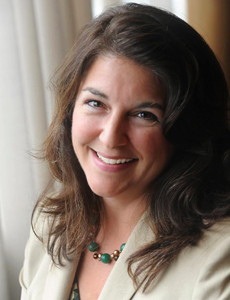Here’s How Vermont Regulators Faced Down an Onerous Federal Tax Law

When the U.S. Federal Government brought the Base Erosion Anti Abuse Tax (BEAT) into force in December 2017, the intention was to stop companies hiding their profits overseas to avoid domestic corporate taxes.
The aim of the law was to prevent firms from loading their balance sheets with costs and deductions and shifting earnings to affiliates in low-tax jurisdictions abroad.
But the law unintentionally penalizes insurers that cede their reinsurance premiums to non-U.S. affiliates based offshore in places such as Bermuda and the Cayman Islands for legitimate business purposes.
As a result, those companies with three-year average annual gross receipts over $500 million and base erosion tax benefits of at least three percent have been clobbered with a minimum tax rate of 10 percent, rising to 12.5 percent in 2026.
Help is at hand, though, and it is issuing forth from Vermont, the leading domestic captive domicile. After increased industry demand from those most affected by the BEAT, Vermont introduced new legislation enabling these firms to establish an Affiliated Reinsurance Company (ARC) in the domicile, thus reducing the level at which they are taxed significantly.
Reinsurance Solution
“Beginning in 2018, insurers with large U.S. operations were subject to the BEAT, which significantly increases the expense of using reinsurance vehicles outside the U.S.,” said Sandy Bigglestone, director of captive insurance at Vermont’s department of financial regulation.
The ARC solution enables the retention of underwriting profits within the U.S. as intended under U.S. tax reform, by allowing U.S. insurers to cede to a U.S. affiliate instead of a foreign affiliate.” An ARC is essentially a hybrid between a captive and traditional insurance.
On the one hand, it is limited to reinsuring affiliates and taxed as a captive, while on the other it’s regulated in line with the National Association of Insurance Commissioners’ (NAIC) accreditation standards.
It’s most beneficial for companies with large U.S. operations that use offshore reinsurers, according to David Provost, deputy commissioner of captive insurance at the State of Vermont’s department of financial regulation.

David Provost, deputy commissioner of captive insurance, department of financial regulation, Vermont
The key advantages of the new law are that firms would now pay less tax with a $200,000 cap in state premium taxes, he said.
“The industry approached us with a need for an onshore alternative,” said Provost.
“It’s something we’ve been considering for some time, but the imposition of the BEAT on foreign reinsurance made the timing critical. Instead of paying 10 percent tax on their top line, they have a captive reinsurance premium tax that starts at less than one quarter of a percent and the tax is limited to $200,000. So it’s a significant saving.”
New Structure
Drawing on its own expertise and working closely with the state’s legislature, Vermont’s captive insurance division moved quickly to put together the new law under House Bill 719 late in the 2018 legislative session. After Governor Phil Scott signed it into law in May 2018, Vermont became the first and only state to provide ARCs.
Licensed and regulated by the state’s dedicated 30-person team, ARCs have to meet NAIC accreditation standards, including on solvency, holding company regulation, the use of statutory accounting principles and investment policies, said Bigglestone.
They must also file quarterly and annual statements using NAIC statutory accounting principles.
In addition, the state will carry out an analysis quarterly, focusing on financial performance and making sure that the ARC adheres to its approved operation and investment plan, as well as looking at the financial health of its parent and reinsurance affiliates, said Bigglestone.

Sandy Bigglestone, director of captive insurance, Department of Financial Regulation, Vermont
It will conduct a full statutory examination at least every five years, she said.
A key feature of the ARC law is a simplified investment statute.
“The ARC law requires companies to file an investment plan for regulatory approval,” Bigglestone said. “The plan must address diversity in type and issuer of investment and provide sufficient liquidity for solvent operations consistent with NAIC accreditation requirements.”
An ARC can only reinsure risks ceded by a parent or affiliate subject to a reinsurance contract, according to state guidelines.
It can also cede its assumed risks to another reinsurer, and it must hold a minimum of $5M in capital and surplus, the rules state.
This enables the company to have better operational control and consistency, more effective capital management, and continuity and availability of reinsurance, said Bigglestone. The company is also exposed to less volatility from reinsurance market fluctuations, she added.
The First ARC
Mapfre Re, a Spanish reinsurer, which does business in more than 100 countries, became the first company to form an ARC in Vermont.
The state went to great lengths to accommodate its needs, even bringing in the reinsurer’s representatives to meet with the House committees handling the legislation.
Provost said he is in discussions with several other companies about setting up an ARC. But he doesn’t anticipate a wave of new formations.

Richard Smith, president, Vermont Captive Insurance Association
“ARCs apply more specifically to large corporations using offshore reinsurers, for whom it makes sense to move to a structure like this,” he said.
“Hopefully as a result of the success that Mapfre Re has had, that will attract other similar sized companies to follow suit.”
“It is just another great example of how the State of Vermont is at the leading edge of innovative when it comes to creating a solution that provides an invaluable tool for risk managers and their companies,” said Richard Smith, president of the Vermont Captive Insurance Association.
“The implementation process also shows the importance of having a strong relationship with the state legislature.”
Bermuda: The New Normal
Bermuda will continue to be a key reinsurance hub despite the BEAT, according to the A.M. Best study ‘Global Reinsurance: Optimism Fizzles, It’s Back to the New Normal.’
The study says reinsurers responded to the new law by decreasing the size of their inter-company reinsurance arrangements or eliminating them altogether.
Or they have moved their capital to onshore balance sheets or formed new Bermuda entities that elect to pay U.S. tax.
The report added that while the new law was another driver for mergers and acquisitions, the larger balance sheets of the reinsurers partially offset the pressure on the Bermuda market to conform.
Another report by Fitch Ratings said the BEAT along with the 14 percent cut in the U.S. corporate tax rate will “significantly reduce the long-standing Bermuda tax advantage over the U.S.”
“The U.S. tax reforms will shrink the profitability gap between Bermuda and U.S. companies that has already been narrowing over the last several years as competitive market conditions have reduced Bermuda’s historical return on average equity advantage,” concluded the ‘Bermuda 2018 Market Update’ report. &










